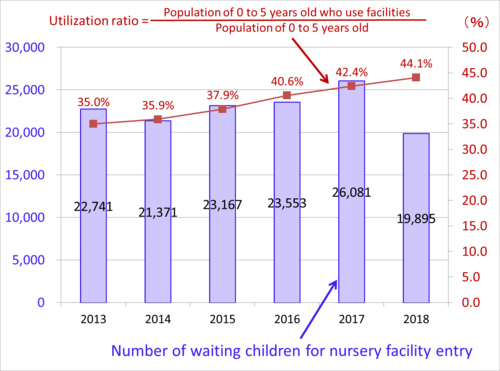Column Finance and the Social Security System 2019.07.17
【Aging, safety net and fiscal crisis in Japan】No.202:There are still large numbers of children waiting to enter nursery facilities in urban areas.
As explained in Column No. 117, the shortage of nursery facilities has become a major political issue. New data released by the Ministry of Health, Labour and Welfare indicate that the number of children waiting to enter nursery facilities decreased by 23.7% from April 2017 to April 2018 (i.e., from 26,081 to 19,895, respectively) (Figure 1). In addition, the number of children aged 0 to 5 who were using a nursery facility rose from 42.4% to 44.1% over the same period.
The evidence indicates that these changes resulted from government subsidies and deregulations designed to increase the number of nursery facilities. As shown in Figure 2, the number of nursery facilities increased from 32,793 in 2017 to 34,763 in 2018. However, these facilities are still lacking in urban areas, where populations are more concentrated. As shown in Figure 3, 9,222 of 19,895 children are waiting to enter nursery facilities in the South Kanto region, which is comprised of the four prefectures of Tokyo, Kanagawa, Saitama, and Chiba.



